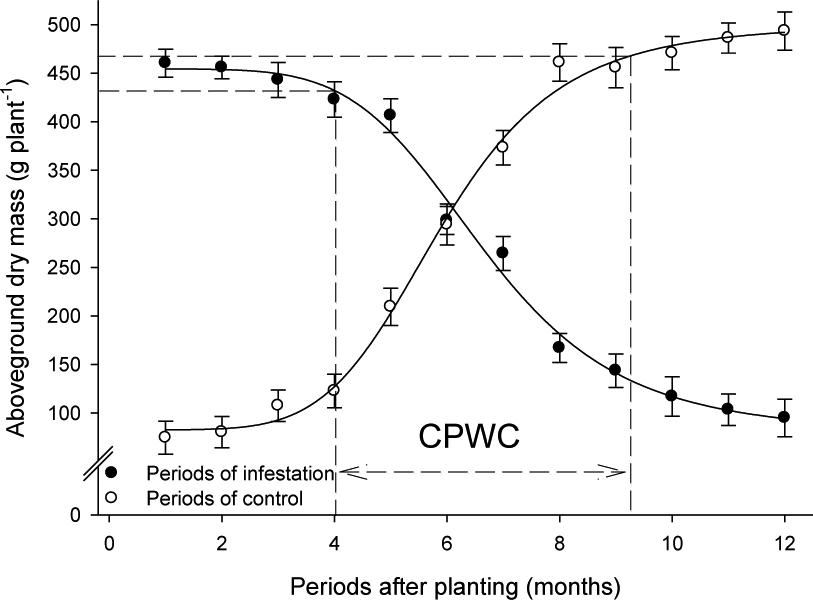Rubber tree production is reduced by weeds that compete for environmental resources; therefore, the timing and duration of weed control influences weed interference. The objectives of this study were to evaluate the growth of rubber tree (Hevea brasiliensis) plants, to determine the critical period for weed control, and to evaluate the growth recovery of rubber trees that coexisted with weeds for different periods of time after planting. Two groups of treatments were established under field conditions in the first year of the investigation: one group contained crescent periods of weed infestation, while the other contained crescent periods of weed control, also including a weed-free check and a total weedy check. In the second year of the investigation, the weeds were totally controlled. Urochloa decumbens was the dominant weed (over 90% groundcover). Crop growth was greatly reduced due to the weed interference. Plant height decreased more rapidly than did any other characteristic. Plant height, leaf dry mass, and leaf area decreased by 99%, 97% and 96%, respectively, and were the most reduced characteristics. Plant height also recovered more rapidly than did any characteristic when the period of weed control was lengthened. However, stem dry mass increased by 750%, making it the most recovered characteristic. The critical period for weed control was between 4 and 9½ months after planting in the first year; however, the rubber trees showed an expressive growth recovery when the weeds were controlled throughout the second year.
Hevea brasiliensis ; weed interference; critical period for weed control; growth recovery



